Three Recipes I Could Make With My Eyes Closed
With the actual recipes included, so you can learn to make them too.
I am an inveterate recipe follower. The recipe books on my shelves, even those by “celeb” chefs, are not window dressing (hence the fact I will never put them in rainbow order…); they are taken down and used regularly in my kitchen. I try to make at least one new recipe a week from the magazines to which I subscribe (delicious and Waitrose, which I wrote about last week) and just yesterday I made two recipes from the latest Waitrose magazine by Ravinder Bhogal - a cherry, pistachio and feta fattoush for lunch (gorgeous and refreshing) and a coriander chicken curry for dinner, which I served with a roti.
I find the whole process of researching, shopping for and following a recipe incredibly soothing. I think partly this is because I can use what Ella Risbridger describes as the mental Rubik's Cube to predict how flavours and textures will work together, so I have already run through the process in my head before making it, and I have the experience to know how long things like softening onions will take, so that if the recipe instruction is slightly off, I can adjust it and make contingency plans. (Less experienced cooks could, for example, be frustrated and confused by the fact that their onions are still not soft after the prescribed 5 minutes a recipe may give. I just automatically up the time, and stay combobulated).
I am always impressed by those like my friend Victoria, who rarely follows a recipe but generally cooks by instinct, as her grandmother used to do. For me, a written recipe provides a reassuring scaffold on which I can build my own versions of meals. Without the scaffolding, especially the list of ingredients/quantities, for me cooking starts to feel a bit dangerous, and not in a good way. Victoria, like my daughter, is also highly proficient in learning music by ear rather than from reading a printed score - I wonder if the two are linked in some way?
This is a long-winded way of saying that I don't cook many dishes without looking at a recipe, even if I’ve made it many times. My learning style is highly visual, rather than kinaesthetic or auditory, and although there are cooking techniques that are locked into my muscle memory, I generally appreciate the reassurance in print that I’m doing the right thing. However, there are exceptions, and I’m going to share three of them with you today.
1. Penne al tonno
My love affair with tuna and pasta goes back to my secondary school days, when in Home Economics, we learned to make a tuna and pasta salad with peas, sweetcorn, raw onion and mayonnaise - a combination so delicious that I ate the whole lot with my fingers on the train ride home and then immediately made it again for my family.
Penne al tonno is a recipe from Patricia Lousada’s Pasta Italian Style - a classic in the Sainsburys cookery book range from the 1980s. It's a great store cupboard recipe and has been a staple, in various iterations, for midweek family suppers over the last thirty years in my house.
You will notice that the photo above is conchiglie, not penne. This is because my daughter, for reasons never clearly explained, has a pathological aversion to pasta quills. We tend to make it in our house with pasta shells, which hold the sauce well, or spirali, or my personal favourite, the twisty casarecce.
The sauce is, as Patricia Lousada says, simplicity itself and ready in less time than it takes to cook the pasta. You melt a knob of butter in a small saucepan and add half a tin of chopped anchovies until they melt into the butter. In the original version, I’d have added a tablespoon of oil to the butter, but now I tend to add the whole contents of a tin of decent tuna in olive oil. You mush it around gently over a low heat till it's all blended, then add chopped flat leaf parsley. A bit of the pasta cooking liquid added to the sauce makes everything unctuous and velvety. I often cook some tenderstem broccoli with the pasta for about the last 4 minutes of the cooking time then add it all together. It doesn't need any salt or Parmesan, but benefits from plenty of black pepper. One tin of tuna is meant to make enough sauce to serve 4, but if I were cooking for 4 I’d probably double the sauce ingredients, because I am British.
The sauce has a delicious taste - something about the fish, black pepper and the butter gives it that mouth tingling feel, almost akin to papaya seeds or Schezuan pepper. I have also made a version of this with decent pale albacore tuna, garlic and chilli flakes that was close to the taste of a chilli crab linguine but significantly cheaper.
2. Italian Lemon Chicken
Another recipe originally from a Sainsburys cookery book, and one of the first non-tuna based savoury dishes I learned to cook for myself as a teenager. In fact, I made it so regularly that when I was about to move in with my friend Catherine, then a vegetarian, in my second year at uni, my brother disparagingly commented, “So what are you going to make to feed yourselves? Lemon Vegetables??”
The whole selling point of this dish is the plate-lickingly good sauce, which was a bit of a revelation in the 1980s days of Bisto gravy granules and flour-based white sauces.
You use a chicken breast per person, take off the fillet then cut the remaining meat horizontally into two flatter pieces. You can bat these out further between two pieces of greaseproof with a rolling pin, but I don't usually bother. You then put some plain flour on a plate, season it then use it to dust the chicken pieces. Then you heat a couple of tablespoons of oil and 30g butter (for 4 breasts) in a pan and fry the chicken in batches until cooked through and golden. Once all the pieces are cooked, remove them to a plate and keep them warm. You then add 150ml chicken stock and the juice of 1 or 2 lemons, depending on how lemony you like it. Bubble away, scraping up all the delicious bits from the base of the pan, till the liquid has reduced by half. Off the heat, add chopped parsley and another 20g butter and swirl it around to incorporate the cold butter into the hot sauce.
I usually serve this with some form of broccoli, which soaks up the sauce beautifully in its florets, and often with Delia’s garlic and rosemary oven roast potatoes (from her seminal Summer Collection).
My mother, who taught me the recipe, adapted it in later years for her Gourmet Club, replacing the lemon and parsley with lime and coriander for a more Eastern vibe which some people prefer, but I remain a fan of the original.
3. Lamb Kebabs
So simple and so, so good. These taste like you have some secret ingredient in the marinade when really, it's just four ingredients: sliced onion, lemon juice, olive oil and salt. Again, how much of each you use is up to you. I buy a butterflied leg of lamb from Sainsburys and cut it into chunks to make 4 kebabs. I generally use the juice of 2 lemons and 4 tbspns of olive oil, one or two onions depending on size, and a generous grinding of salt. If I need to feed more people, I’ll use the same amount of meat but thread some veg such as courgettes or peppers to bulk out each skewer. This recipe is one both my mother and father used to make for us when we were children and teenagers, and as soon as I earned enough money to afford to buy lamb (it's not cheap!) I started to make it too.
The lamb needs to sit in its marinade for at least a couple of hours, but can also be prepared the night before. Once the lamb has been threaded on the skewers, two more things need to happen for the optimum taste sensation: the kebabs need to be brushed with a bit of Greek yogurt before grilling or barbecuing, and the onion-oil-lemon mixture from the bowl needs to be put in a small pan and cooked down until the onions are soft, golden brown and ready to add their lemony sweetness to the finished dish.
Whether cooked indoors or on a barbecue or plancha grill, I tend to serve these with either pilau rice or a flatbread, and a pomegranate, feta and mint salad.
Everyone I have made this for absolutely loves it. It's perfect for al fresco dining. When I travel to our family house in France in the summer, I’ll take a butterflied leg of lamb, frozen, so that by the time we arrive it will be ready to be made into these kebabs. I can't wait. And I won't need to take a recipe with me, because it and the other two recipes I’ve shared are written on my heart.
Are you a recipe follower or a more instinctive cook? Do you enjoy the process of following a recipe or does it bore you/fill you with fear? What would be your top three dishes you could cook with your eyes closed? Let me know in the comments!




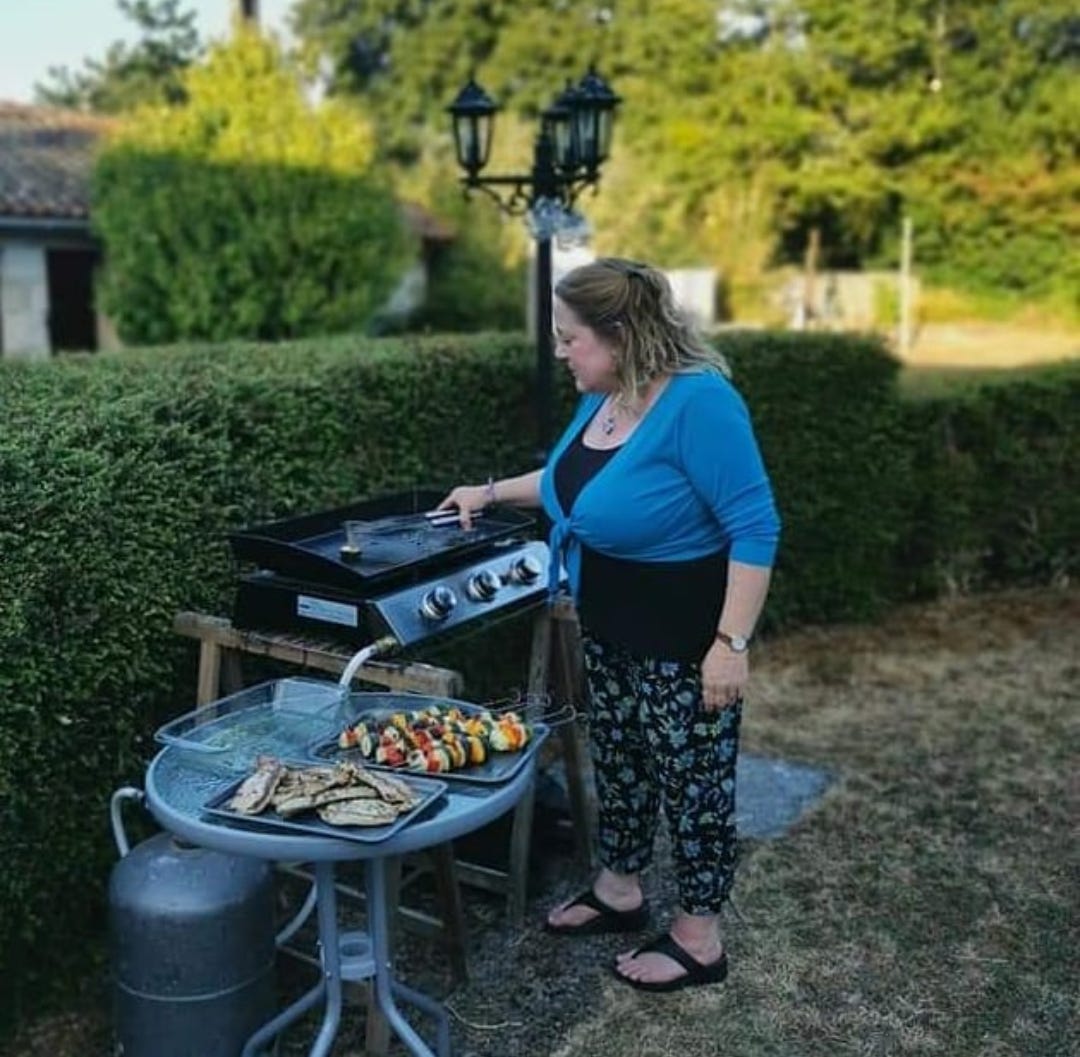
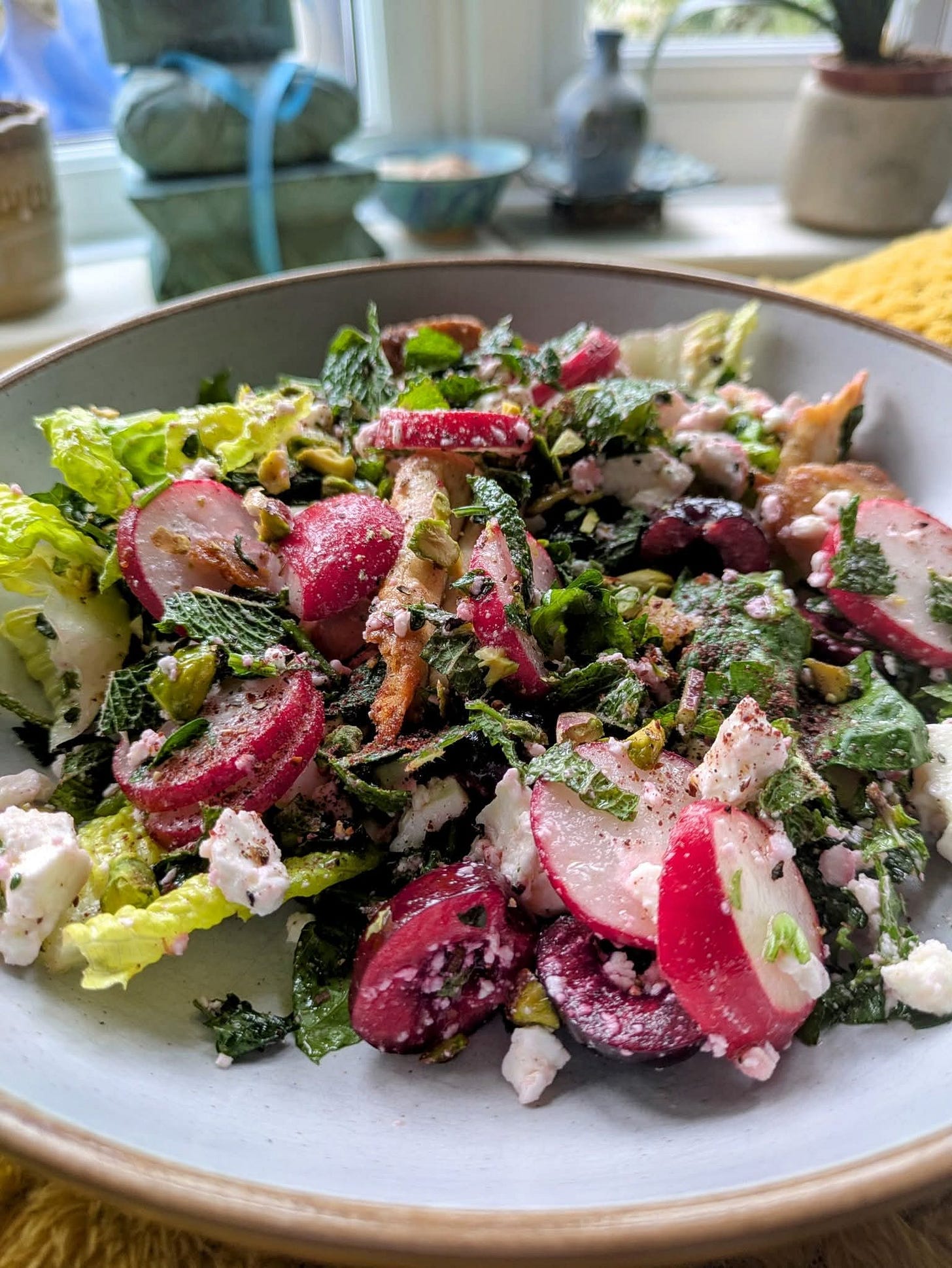


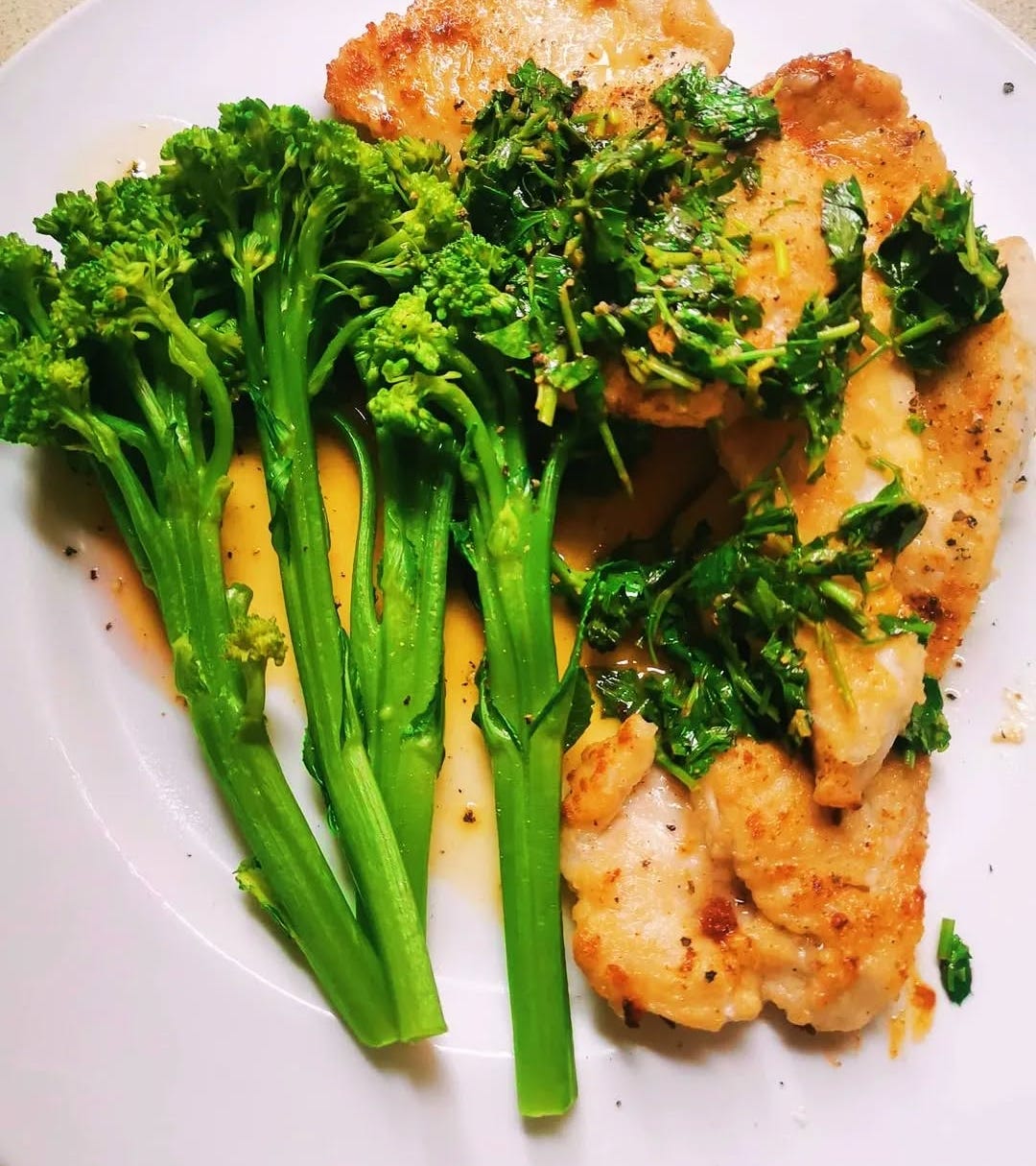

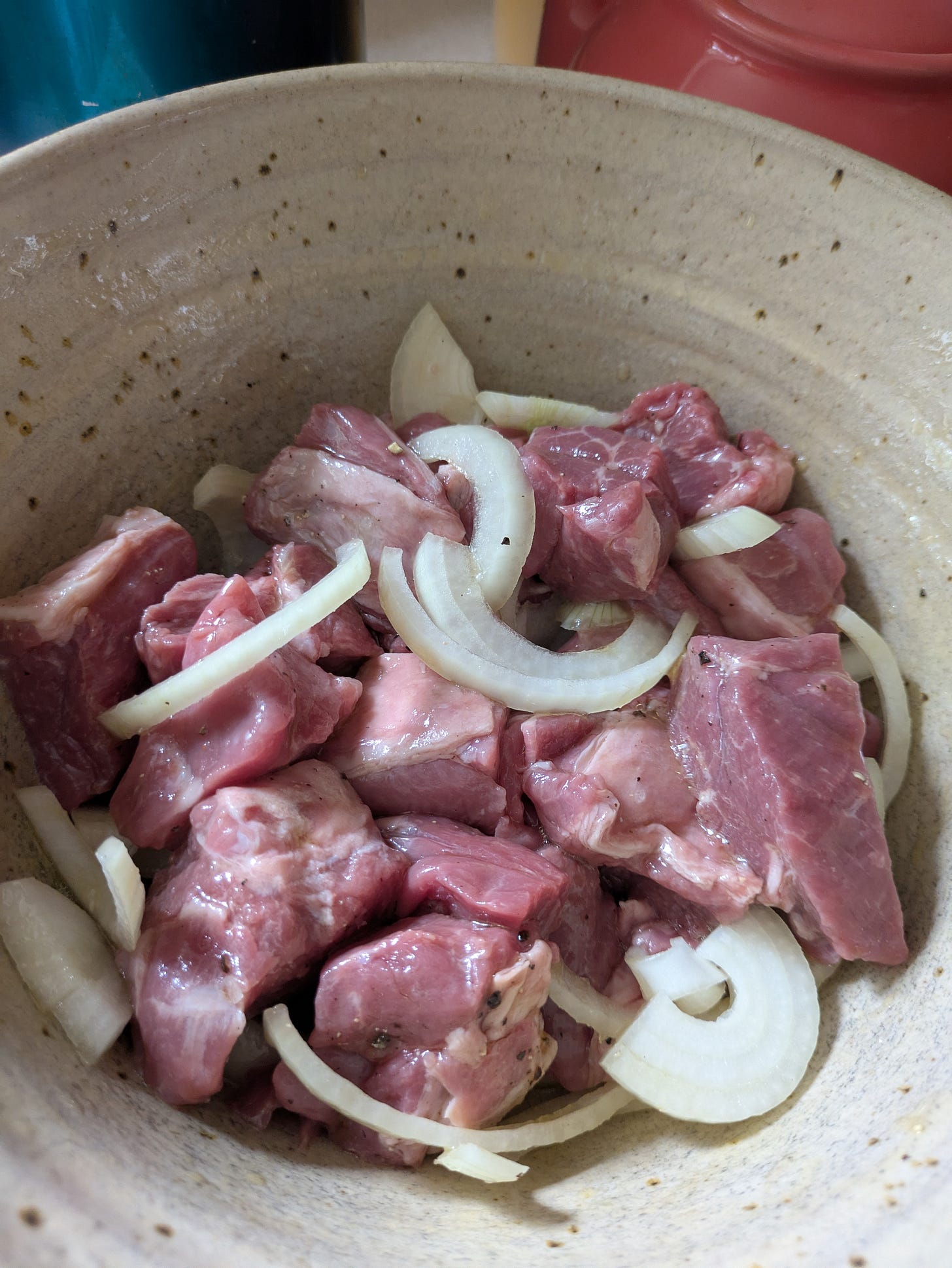
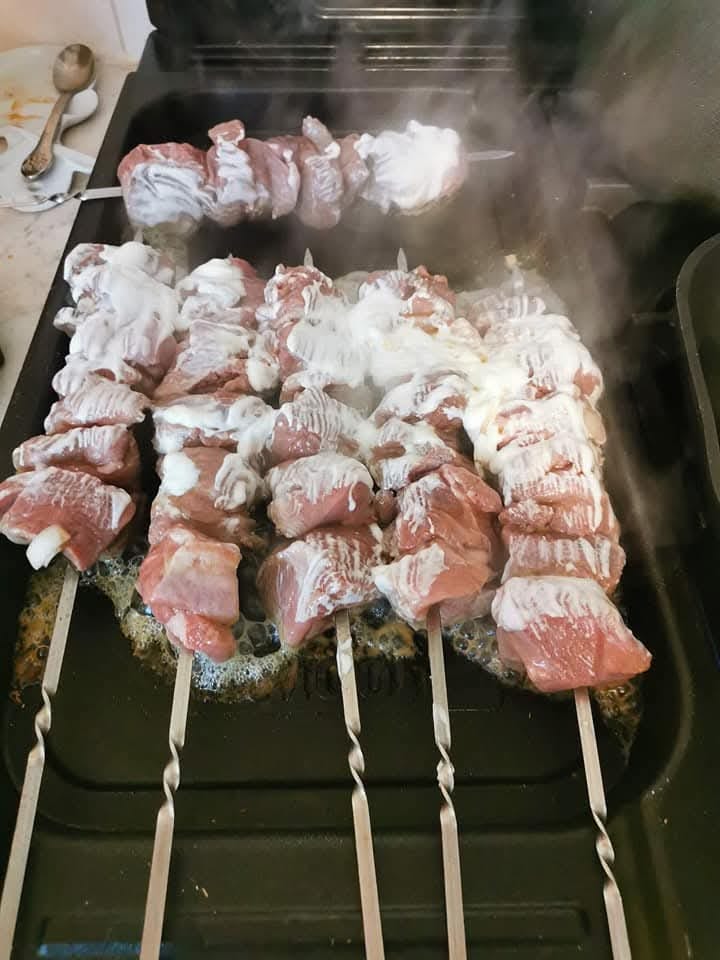


I love your comment about the Rubik's cube of flavours and textures in your head. That is exactly what it's like for me!
Love the sounds of your Italian lemon chicken too. I think that may be my lunch tomorrow.
I am trying to think of the dishes I whip off without even thinking... I would say variations of:
Lemon roasted salmon with minty new potatoes and buttered green beans.
Steak stir fry with a gingery, limey, sesame and soy dressing, noodles and broccoli.
And a prawn spaghetti, made simply with shallots and garlic, a little white wine, lemon, chilli and parmesan.
Not a bad trio!
I love reading your posts Fiona. Home economics seems to have gone out of the curriculum. Shame really, we all need to know how to cook, and it’s good to know how to sew.
There are many dishes that are woven into the culinary fabric of my life.
1. Marcella Hazan’s tomato sauces
2. Sri Lankan chicken curry, Dahl, ghee rice, mallung ( greens, chilli, coconut), chilli sambal.
3. Nasi goreng
I hope your lamb dish is enjoyed on a perfect holiday in France.